SRS giant storage unit okayed for start

The Department of Energy’s Office of Environmental Management has authorized the newest megavolume disposal unit to begin operating at the Savannah River Site in South Carolina.


The Department of Energy’s Office of Environmental Management has authorized the newest megavolume disposal unit to begin operating at the Savannah River Site in South Carolina.
The Defense Waste Processing Facility (DWPF) at the Department of Energy’s Savannah River Site (SRS) in South Carolina has resumed operations after a completing a processing improvement that the DOE said will enable safer operations and more efficient vitrification of radioactive waste.
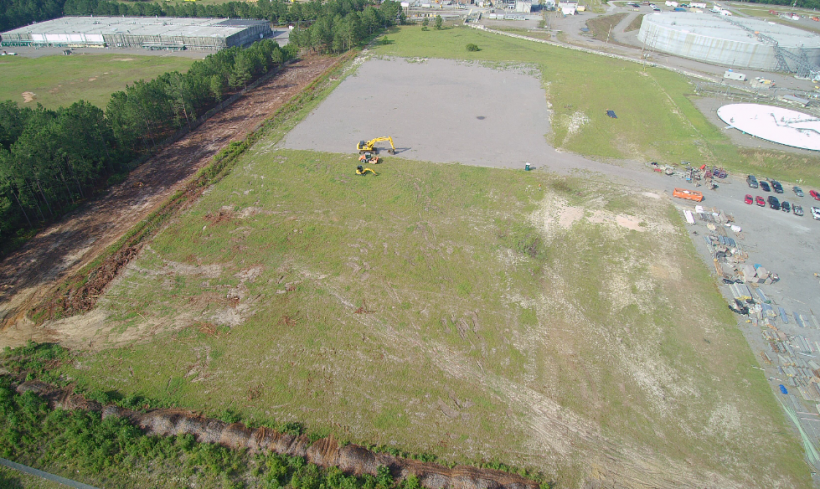
The Department of Energy’s Office of Environmental Management (EM) announced that it is preparing for construction of the final three planned saltstone disposal units (SDUs) at the Savannah River Site in South Carolina, which will complete the site’s liquid waste mission.
The SRS liquid waste contractor, Savannah River Mission Completion (SRMC), is overseeing the construction of the SDUs, which will receive decontaminated salt solution treated at Savannah River’s Salt Waste Processing Facility (SWPF).
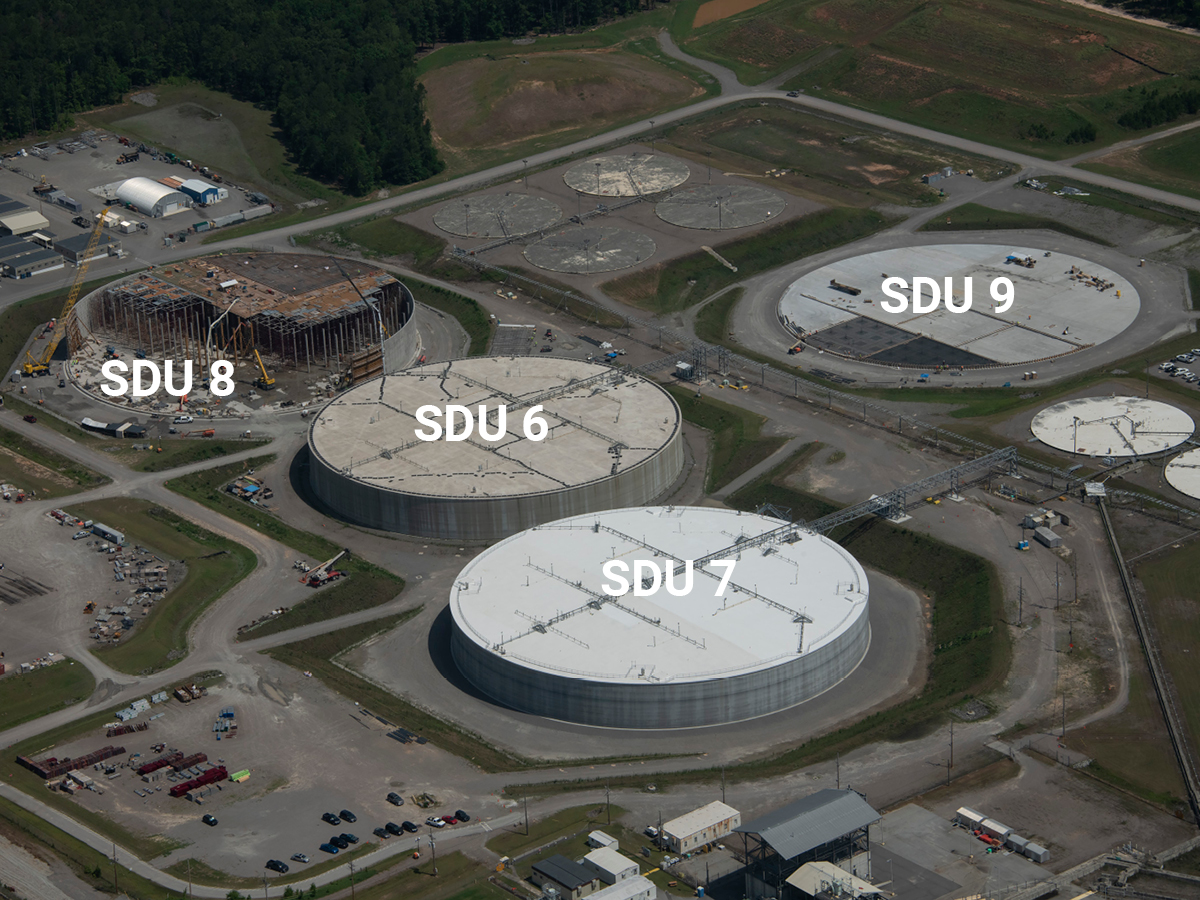
The Department of Energy’s Office of Environmental Management (EM) has authorized the use of a second mega-volume saltstone disposal unit (SDU) at the Savannah River Site in South Carolina. Savannah River Remediation (SRR), EM’s liquid waste contractor at SRS, received Critical Decision-4 for Saltstone Disposal Unit 7, marking the final step in the approval process before beginning operations.
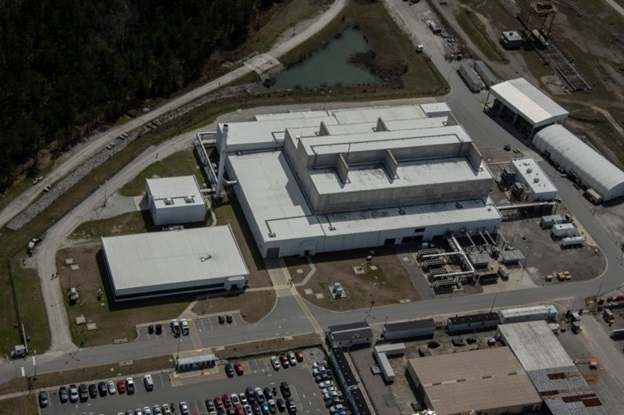
The Salt Waste Processing Facility at the Department of Energy’s Savannah River Site has performed largely as expected, processing more than one million gallons of radioactive waste during its first eight months of operation, the DOE reported on June 8. The SWPF is being used to treat the majority of the site’s remaining liquid radioactive waste, generated from the production of nuclear materials.
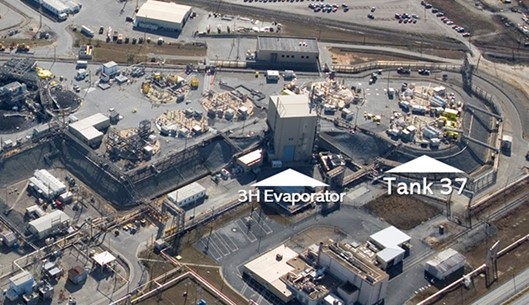
Department of Energy contractor Savannah River Remediation (SRR) announced on May 11 that it has completed a salt dissolution campaign in Tank 37, one of the underground tanks storing high-level radioactive liquid waste at the Savannah River Site (SRS) in South Carolina.
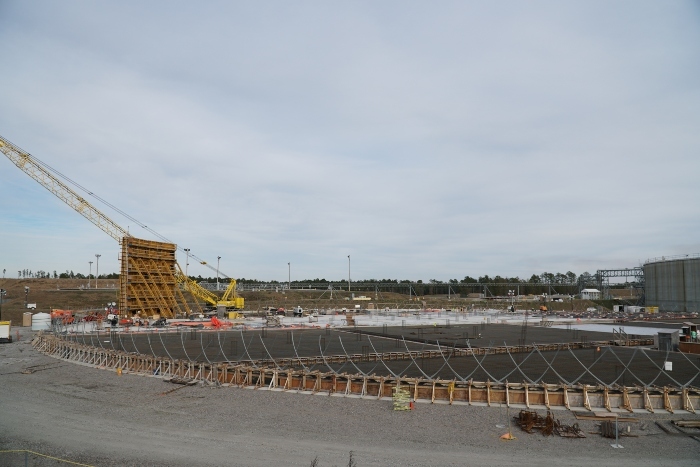
The first wall section of Saltstone Disposal Unit 8 (SDU 8) at the Department of Energy's Savannah River Site in South Carolina was installed earlier this month.
SDU 8 will stand 43 feet tall and 375 feet in diameter, and have a 33-million-gallon capacity, just like two SDUs built recently at the site. The 25 wall sections of SDU 8 are being constructed using high-strength, reinforced concrete and will be wrapped with seven layers of more than 300 miles of steel cable for added strength.
The flooring of SDU 8 is more than halfway complete. The concrete floor sits on top of a multilayer foundation: a geosynthetic clay liner and high-density plastic liner sandwiched between two concrete layers called “mud mats.” The floor is being completed in 14 sections.
The disposal units are built to safely and permanently contain decontaminated salt solution processed at Savannah River, the DOE reported on March 9.
An aerial view of the Salt Waste Processing Facility at SRS. Photo: DOE
The hot commissioning testing phase of operations at the Salt Waste Processing Facility (SWPF) has been completed, signaling the facility’s entrance into fully integrated operations with the other liquid waste facilities at the Department of Energy’s Savannah River Site in South Carolina.
Radiation shielding, environmental emissions, and product waste acceptance requirements were all tested and validated during the commissioning phase of the SWPF, the DOE announced on January 19. The SWPF will treat the approximately 31 million gallons of remaining salt waste currently stored in underground tanks at SRS.
Parsons Corporation, the contractor that designed and built the first-of-a-kind facility, will operate the SWPF for one year, beginning this month. It is anticipated that the facility will process up to 6 million gallons of waste during the first year of operations.

Participants in a ceremonial ribbon-cutting for the Salt Waste Processing Facility at the Savannah River Site included, from left, Rep. Joe Wilson; Parsons chairman and chief executive officer Chuck Harrington; under secretary for science Paul Dabbar; DOE-Savannah River manager Mike Budney; DOE senior advisor William "Ike" White; Parsons president and chief operations officer Carey Smith; SWPF federal project director Pam Marks; and Parsons senior vice president and SWPF project manager Frank Sheppard. Photo: DOE
The launch of the Salt Waste Processing Facility (SWPF) at the Savannah River Site in South Carolina was marked on September 24 with a ceremony attended by the Department of Energy’s undersecretary for science, Paul Dabbar, and senior advisor to the undersecretary for environmental management, William “Ike” White. Also attending the event were Rep. Joe Wilson (R., S.C.) and representatives from the offices of Sens. Lindsey Graham (R., S.C.) and Tim Scott (R., S.C.).
“SWPF is the final piece to what is an impressive and highly successful liquid waste program here,” said Dabbar, who served as the ceremony’s keynote speaker. “Bringing it on line is a tremendous victory, not only for the site, but for the entire cleanup mission.”
The Department of Energy approved the start of operations at the Salt Waste Processing Facility (SWPF) at the Savannah River Site (SRS), authorizing hot (radioactive) operations to begin at the facility, the agency announced on August 17.
The approval comes five months ahead of the current baseline completion date of January 31, 2021. Parsons Corporation, which designed and built the first-of-a-kind facility, will operate it for one year.
“This is a considerable achievement for EM's (Environmental Management) cleanup program and will drive significant progress in treating the tank waste at SRS in the next decade,” said William “Ike” White, senior advisor for the EM to the Under Secretary for Science.
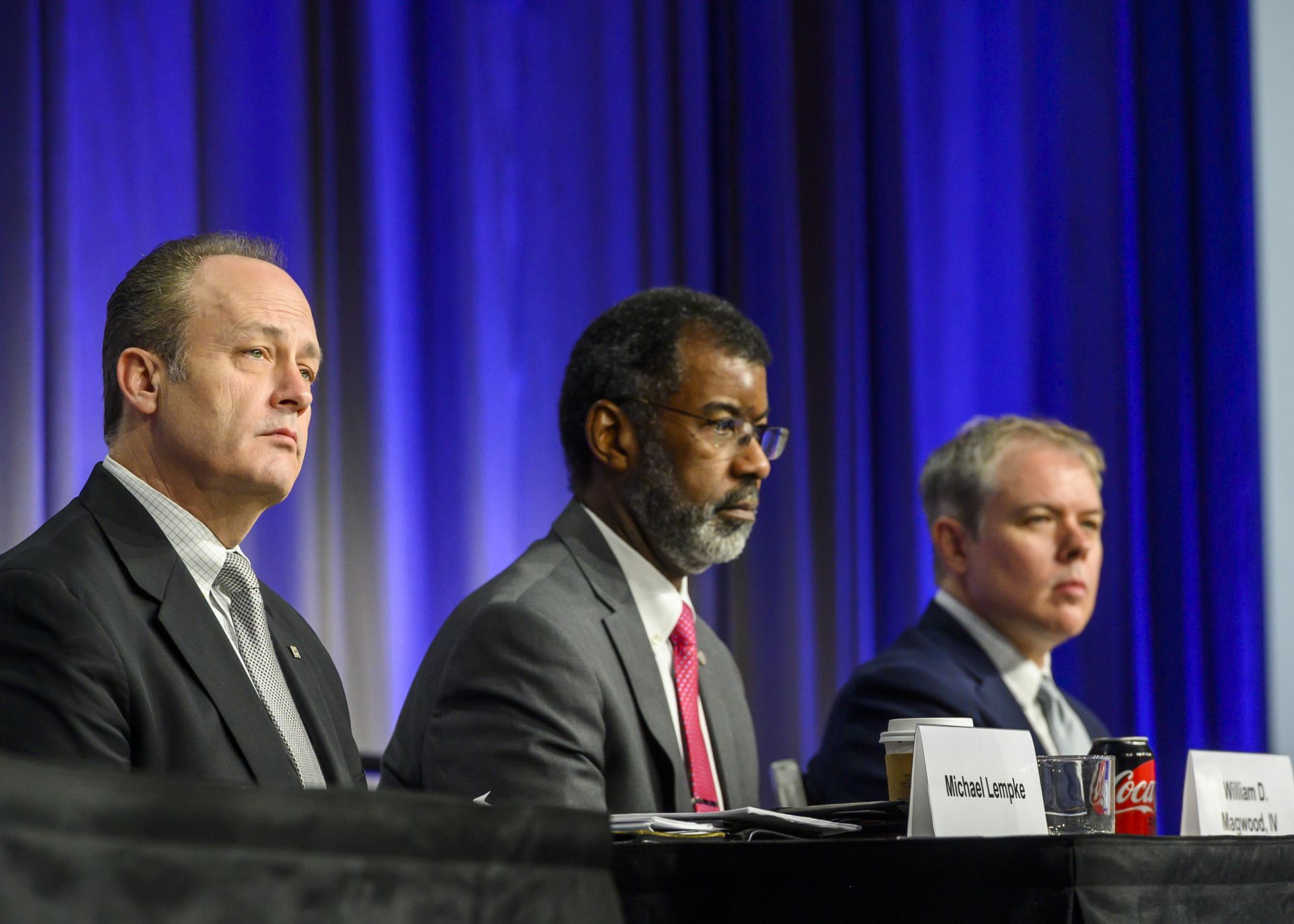
2020 Waste Management Conference plenary speakers included (from left) Michael Lempke, of Huntington Ingalls Industries, William Magwood, of the NEA, and the DOE’s William “Ike” White. Photo: WM Symposia/Flash Gordon.
The 2020 Waste Management Conference, held March 8–12 in Phoenix, Ariz., kicked off just days before the World Health Organization declared the spread of the novel coronavirus a pandemic. When the conference began, it was still unclear how extensive the coronavirus outbreak would be, and meeting organizers later learned that two attendees were tested for COVID-19, the disease caused by the virus, in the days following the meeting. Fortunately, neither of the attendees tested positive.